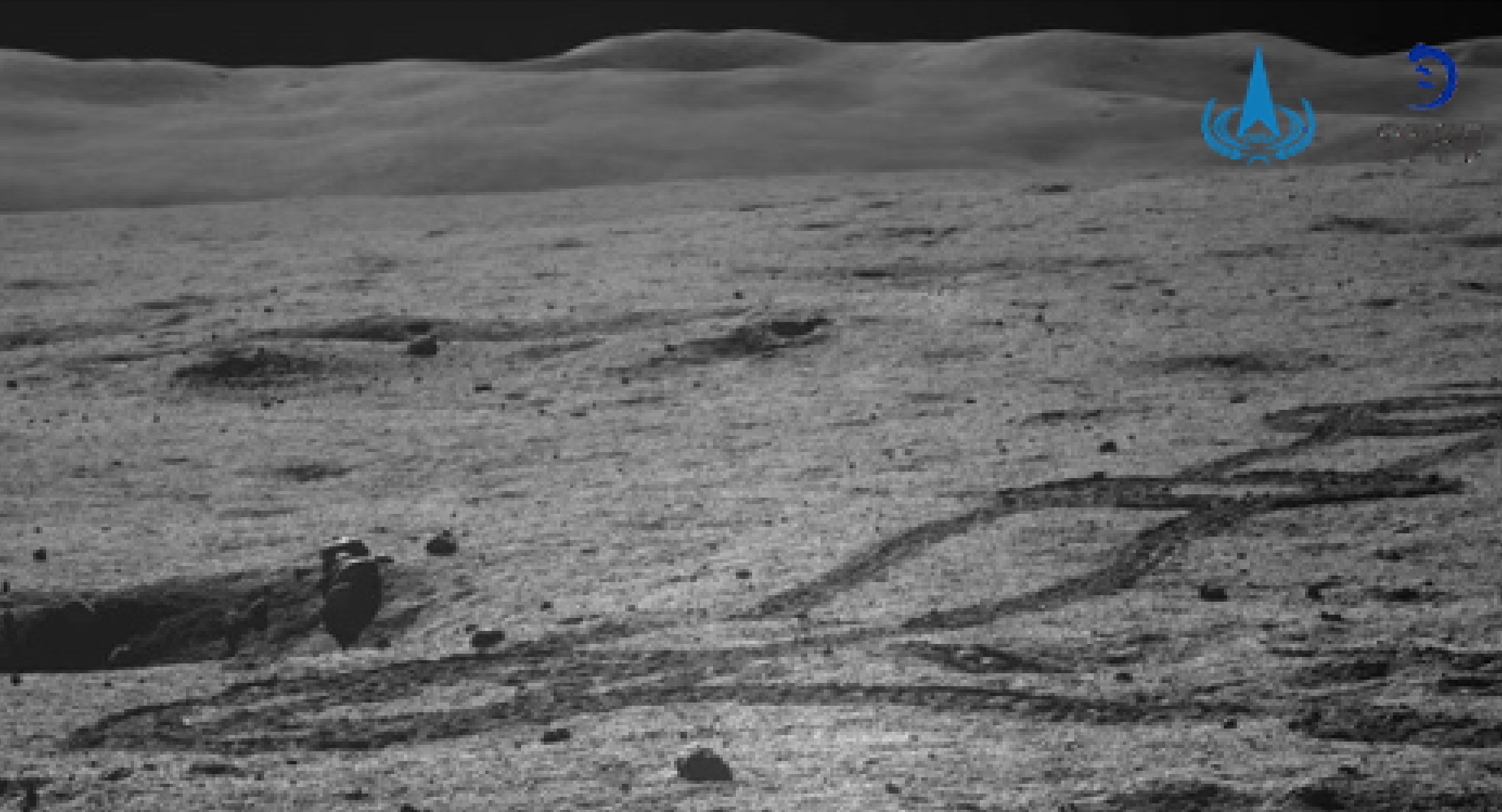China's Yutu 2 rover reveals deep layers below far side of the moon
The rover's radar peers 1,000 feet (300 meters) below the lunar surface.

A team of scientists have put together an image of the layers beneath the surface of the far side of the moon using data from China's Yutu 2 rover.
The Chang'e 4 lander and rover touched down on the moon's far side on Jan. 2, 2019, making the pair the first spacecraft to ever soft-land on the side of the moon that never faces Earth.
The solar-powered Yutu 2 rover has been exploring the floor of the 115-mile-wide (186 kilometers) Von Kármán Crater ever since. Data from its two-channel ground penetrating radar (GPR) is providing a deeper look below the surface, providing a glimpse into the local geological history. The instrument pings the ground with radio waves and detects echoes to help build a picture of the internal structure below.
Related: The latest news about China's space program
An earlier study using the channel scanning to a depth of 130 feet (40 meters) revealed distinct layers of rock debris and soil.
Now, the lower-frequency channel has discovered multiple layers in the upper 1,000 feet (300 m) below the surface, which "likely indicate a series of basalt eruptions that occurred billions of years ago," according to the paper published in the Journal of Geophysical Research: Planets on Aug. 7.
The study was led by Jianqing Feng at the Planetary Science Institute in Tucson, Arizona. Together, the new and earlier studies combine to build a representation of the upper layers of the moon.
Get the Space.com Newsletter
Breaking space news, the latest updates on rocket launches, skywatching events and more!
The paper presents evidence for five main layers, with at least three of them being made primarily of basalt. The researchers find that layers at shallower depths are not as thick as deeper down, suggesting that volcanic activity produced decreasing flows over time, as the moon's internal thermal energy that drove the volcanism died away.
The data used was collected between January 2019 and January 2022, during which the Yutu 2 rover drove around 3,280 feet (1,000 m) across the lunar surface.
China's lunar program rarely provides updates on the Chang'e 4 mission these days, but the rover and lander were going strong in January when the pair marked the fourth anniversary of their landing. The duo are also apparently still active to this day.
NASA's Lunar Reconnaissance Orbiter has regularly spotted Yutu 2 and its tracks on the far side, while amateur spacecraft-tracking radio enthusiasts also frequently detect activity from Queqiao, a relay satellite orbiting beyond the moon to facilitate communications between Earth and the spacecraft on the lunar far side.
Next year, China will attempt to collect the first-ever samples from the far side of the moon with its Chang'e 6 mission.
Join our Space Forums to keep talking space on the latest missions, night sky and more! And if you have a news tip, correction or comment, let us know at: community@space.com.

Andrew is a freelance space journalist with a focus on reporting on China's rapidly growing space sector. He began writing for Space.com in 2019 and writes for SpaceNews, IEEE Spectrum, National Geographic, Sky & Telescope, New Scientist and others. Andrew first caught the space bug when, as a youngster, he saw Voyager images of other worlds in our solar system for the first time. Away from space, Andrew enjoys trail running in the forests of Finland. You can follow him on Twitter @AJ_FI.









